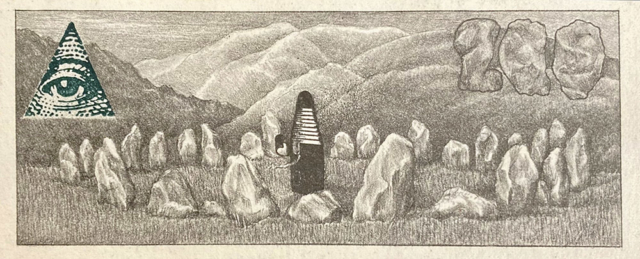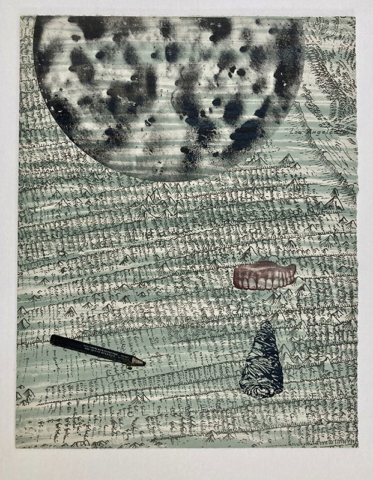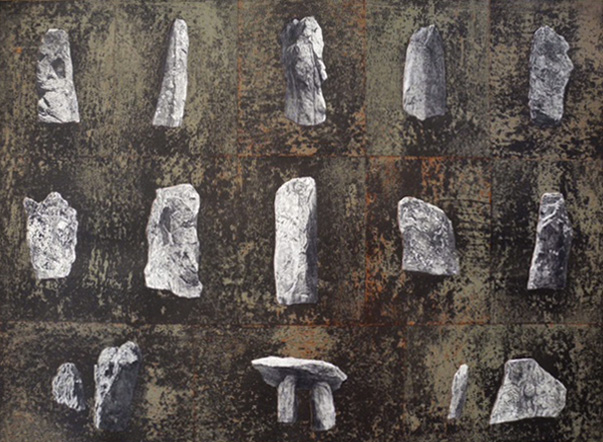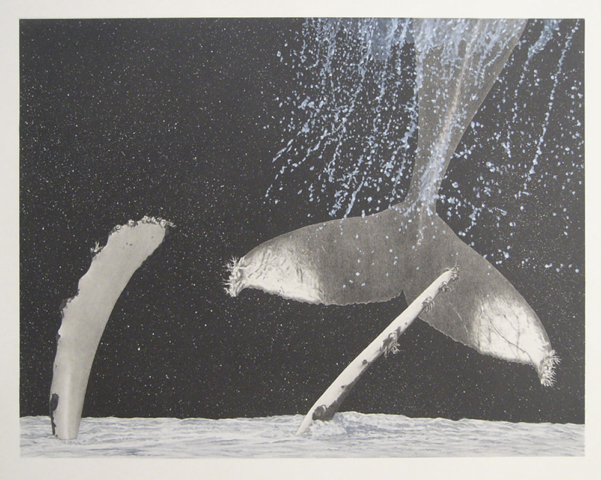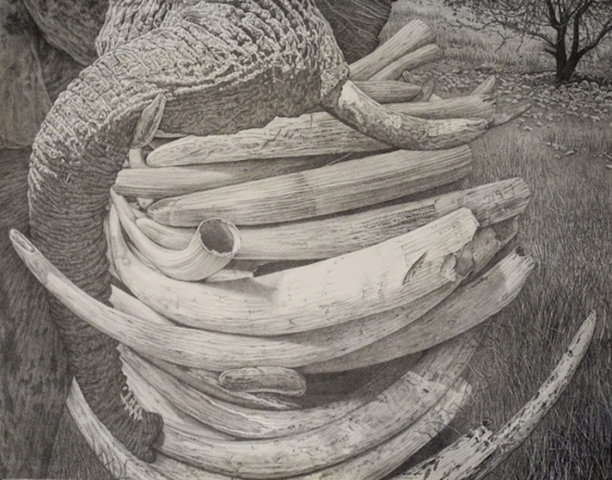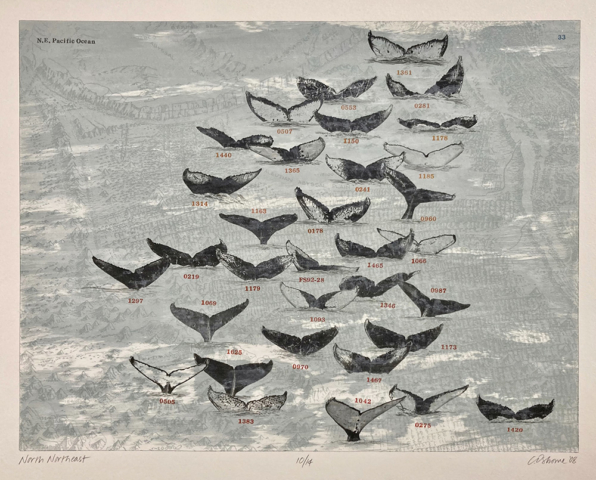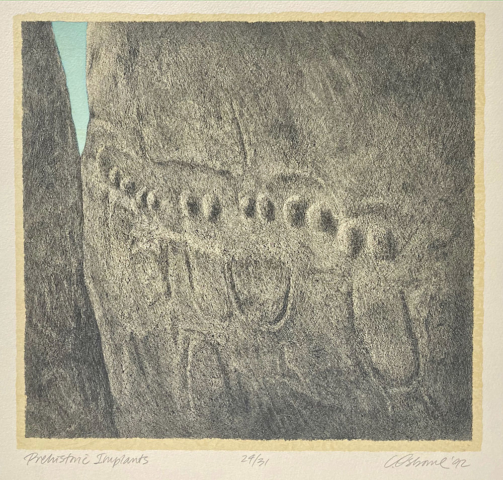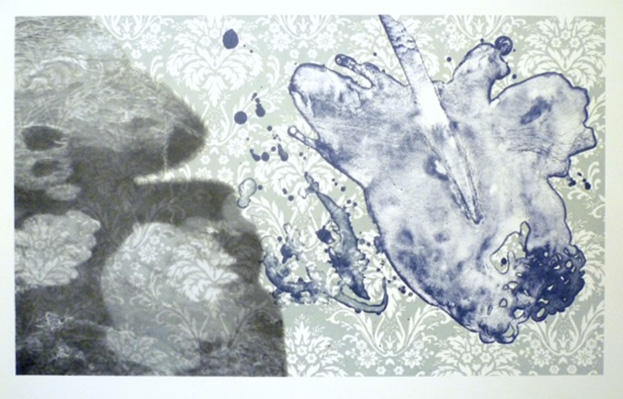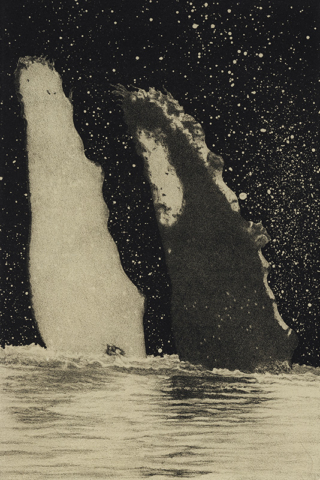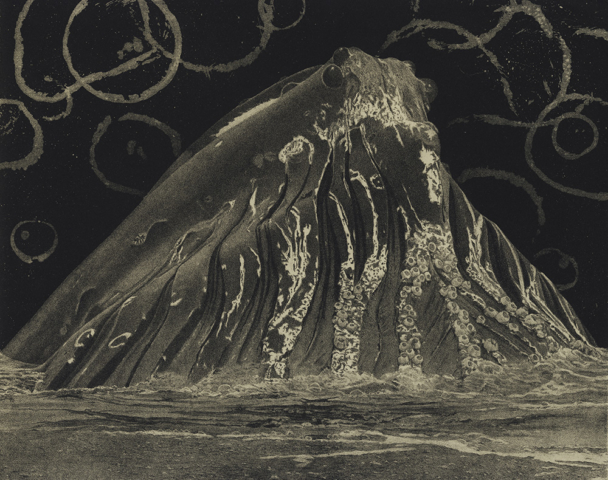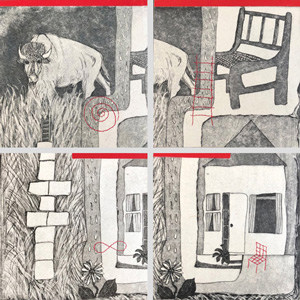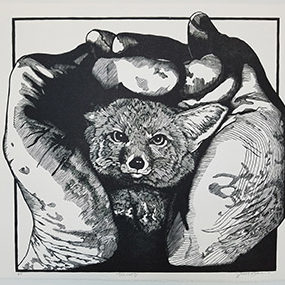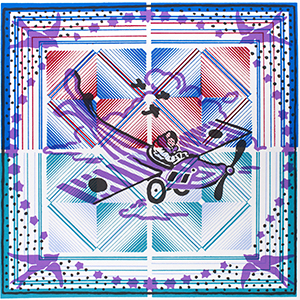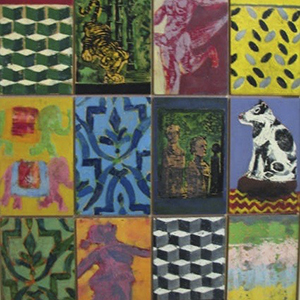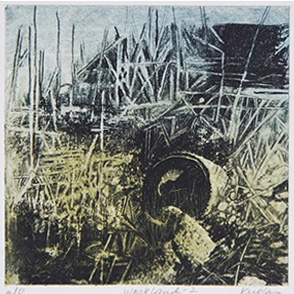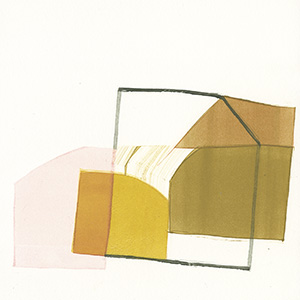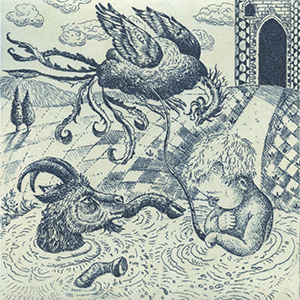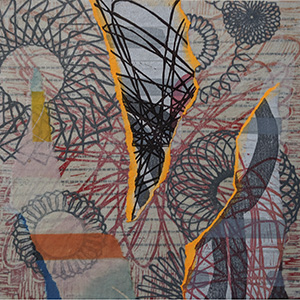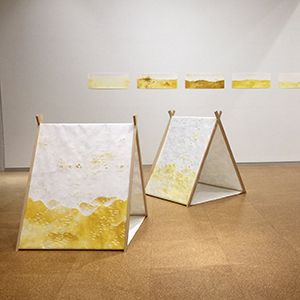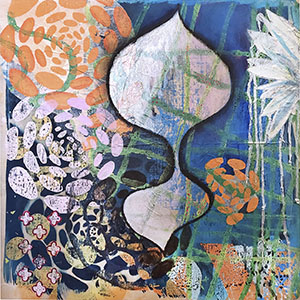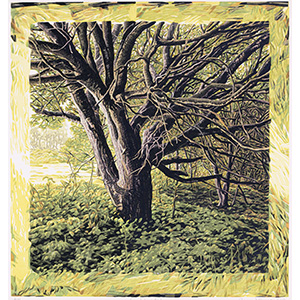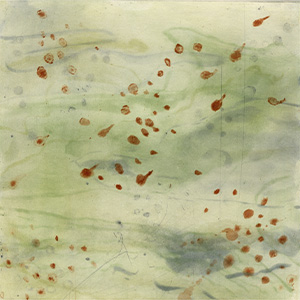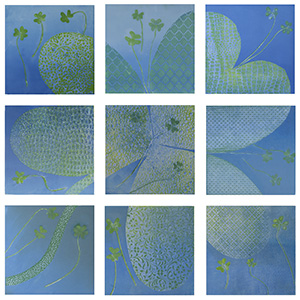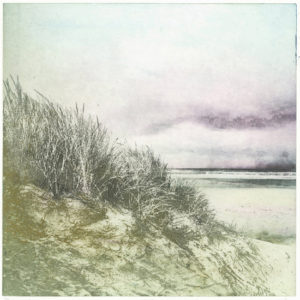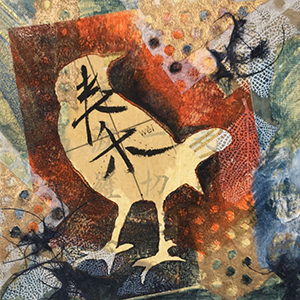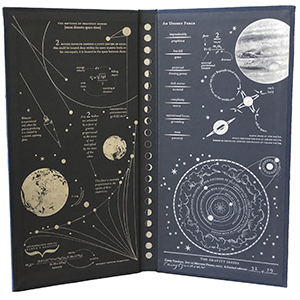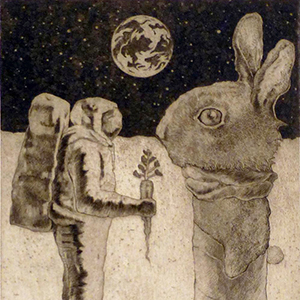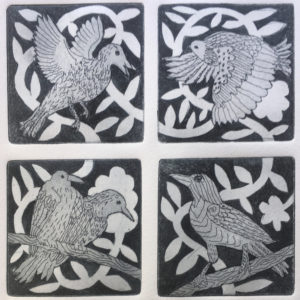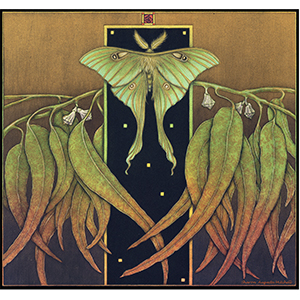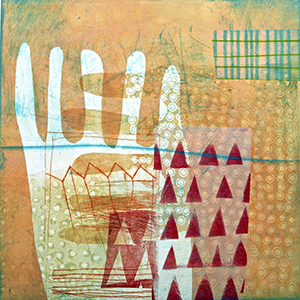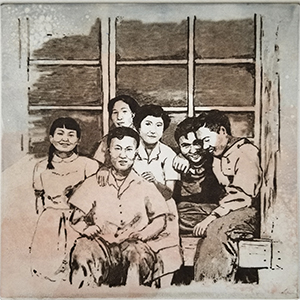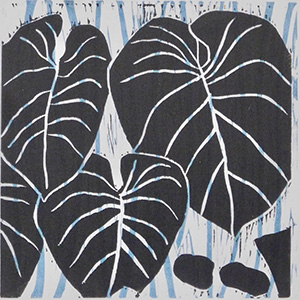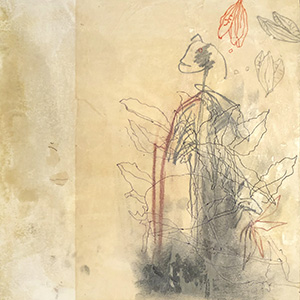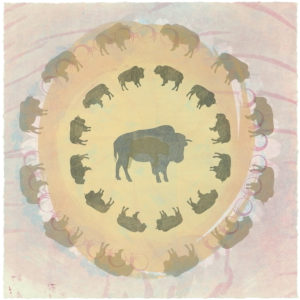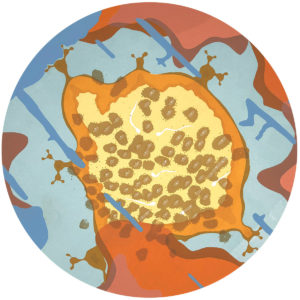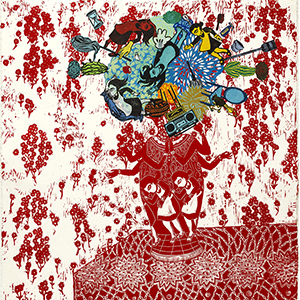Cynthia A. Osborne, Lithographer and Educator
by Katherine Bazak
Cañada College, Redwood City, California
Katherine Bazak is a painter who works primarily with the human figure. Its potential for change, movement and intellect appeal to her optimistic view of life. She finds the figure to be a fascinating subject that demands close observation. She taught at San Diego State University and Cañada College among others. She has a BFA in Painting and Printmaking from Virginia Commonwealth University and a MFA in Painting from the University of Wisconsin, Madison.
Abstract
Cynthia A. Osborne (1947–2018) was an environmentalist and printmaker focusing on the natural world. She is known for images which demonstrate close observation of animals, predominantly whales, and megalithic landscapes. Cynthia was also known for her exquisite technical skill with lithography, her generosity as an educator, and a genuine interconnection of her being with her artwork. Her prints are represented in collections around the world, including the Bibliotheque in Paris, the Brooklyn Museum, the Los Angeles County Museum of Art, the Whitney Museum, and the Smithsonian American Art Museum. This essay discusses her artwork, lifestyle and legacy from the perspective of a four decade plus friendship.
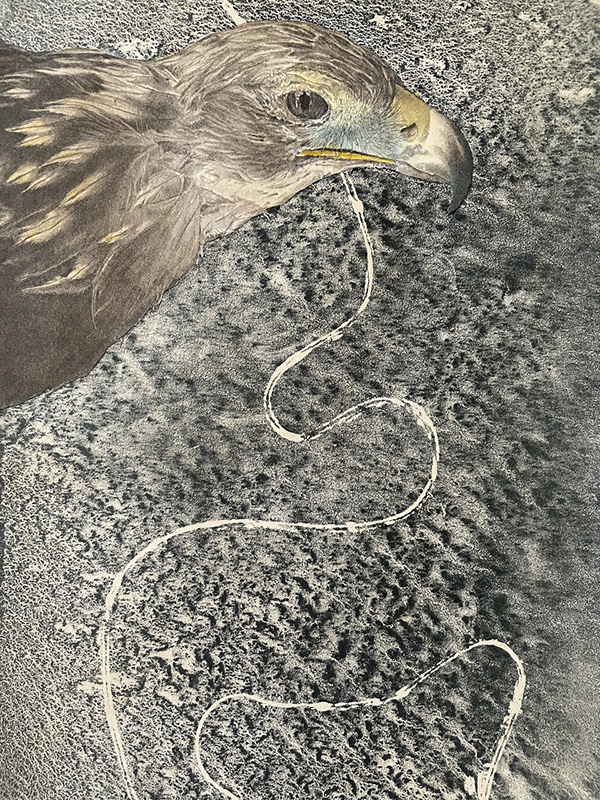
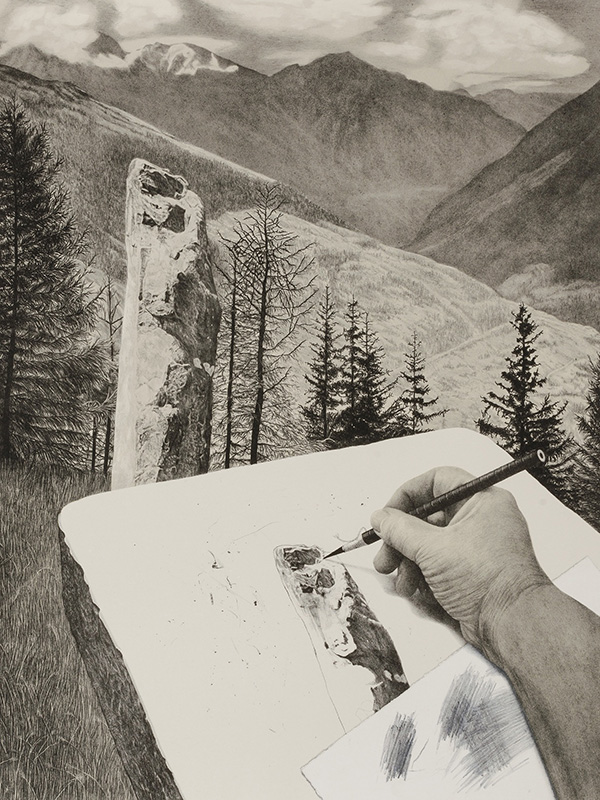
Left: California by Cynthia Osborne, lithograph. Right: Megalith Envy by Cynthia Osborne, lithograph.
Cynthia Osborne: Her Life and Work
Cynthia A. Osborne (1947–2018) was a printmaker whose themes focused on the natural world. It was her fascination with, and passion for, endangered animals, the environment, and megalithic stone ruins, that became the the lifelong subjects of her lithographs. Not only are her works beautifully drawn, but they include wry twists of the conceptual sort: her hand drawing on a litho stone, within the picture plane of the landscape being drawn. A print of a lithography crayon in a circle of megaliths with a swirl of crayon shaving falling off the picture plane conveys not just the mystery endemic to all images of ruins, but of endurance in contrast to modern volatility and also, perhaps the endurance, over time, of the artist as a recorder. The print of a polar bear, existing alongside a camel in the desert, demonstrates that the plight of endangered animals and the environment are intertwined: once out of balance, they both become vulnerable to extinction. And, of course, Cynthia’s beautifully drawn and cleverly composed images of whales, her spirit animal, showed her love for these majestic endangered animals. There is an authentic interconnection of her soul with her artwork.
Cynthia was born and raised in New Milford, Connecticut. She achieved a Bachelor’s in Fine Arts from Connecticut College in New London, and a Master of Fine Arts from the University of Wisconsin, Madison (1974), where she focused on printmaking. At Madison she studied with the renowned printmaker Warrington Colescott and lithographer Wayne Kimball, who had just become the 20th student to graduate from Tamarind Press with Master Printer certification. Kimball, recognizing Cynthia’s talent and abilities, recommended her for two university teaching positions—San Diego State University, directly out of graduate school, and then, a year later, to replace him at California State University, Long Beach (CSULB) where she taught for 30 years. A prolific artist, her prints are represented in many collections around the world, including the Bibliotheque in Paris, the Brooklyn Museum, the Los Angeles County Museum of Art, the Whitney Museum, and the Smithsonian American Art Museum.
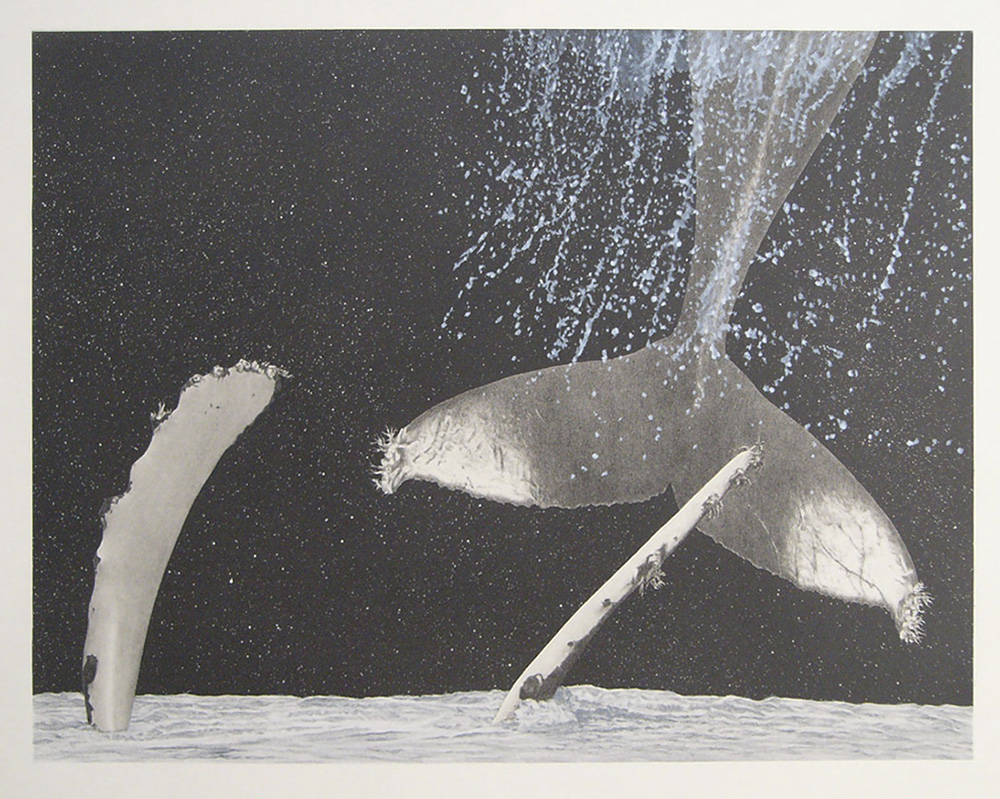
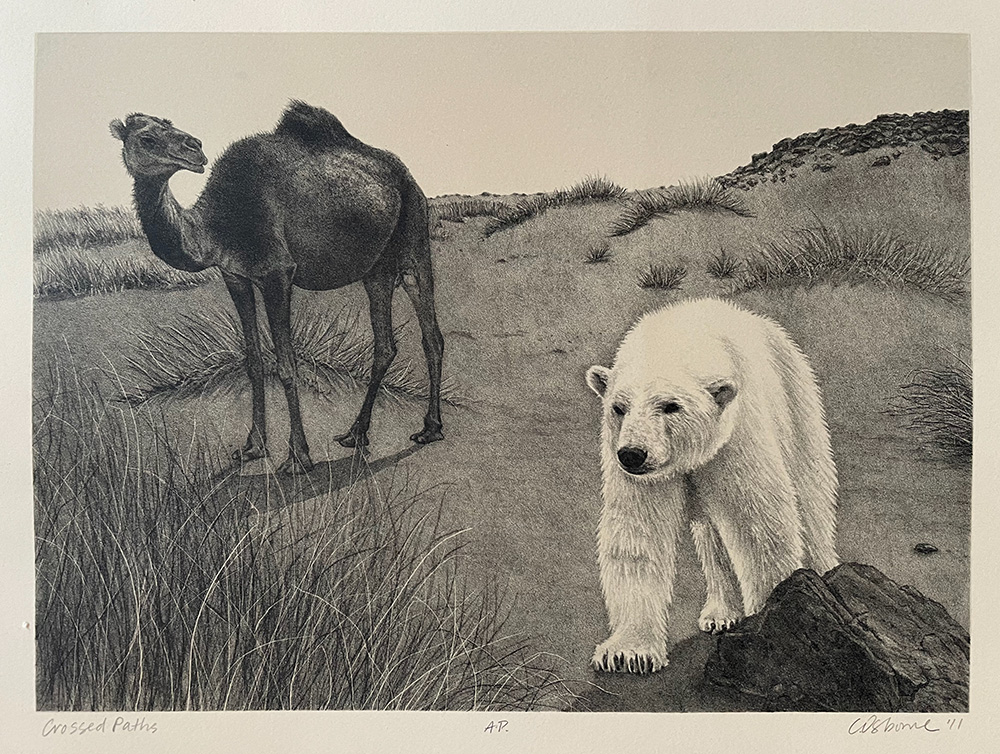
Left: Fly by Night by Cynthia Osborne, lithograph, 2006. Right: Crossed Paths by Cynthia Osborne, lithograph.
At CSULB Cynthia mentored several generations of printmakers. In addition to heading the printmaking program and teaching lithography and screenprinting, she served as advisor for the graduate art program. Her demonstrations were legendary, the depth of her knowledge and mastery of lithography were phenomenal. She could coax the most beautiful and delicate ink wash out of a stone, onto paper, like a magician. She loved her students and was admired by her colleagues, many of whom remained in contact with her after her retirement in 2004. At her memorial many of her former students commented on her generosity, humor, kindness, and influence on their lives. Cynthia accomplished all of this with competence and humility.
Cynthia was a keen observer of the world around her. She loved travel, especially to ancient archaeological sites in Europe. Many of her journeys also involved observing animals in their natural environments, in locations such as Namibia, Antarctica, Alaska, and the Sea of Cortez. An individualist, she prized authenticity over all else, which I think, explains her love for animals. I remember her telling me how amazing it was when she, serendipitously, was eye to eye with a whale and it stared back at her in interspecies communication. I have seen angry or scared dogs calm when she approached them. She had that affect on them. These experiences informed her art.
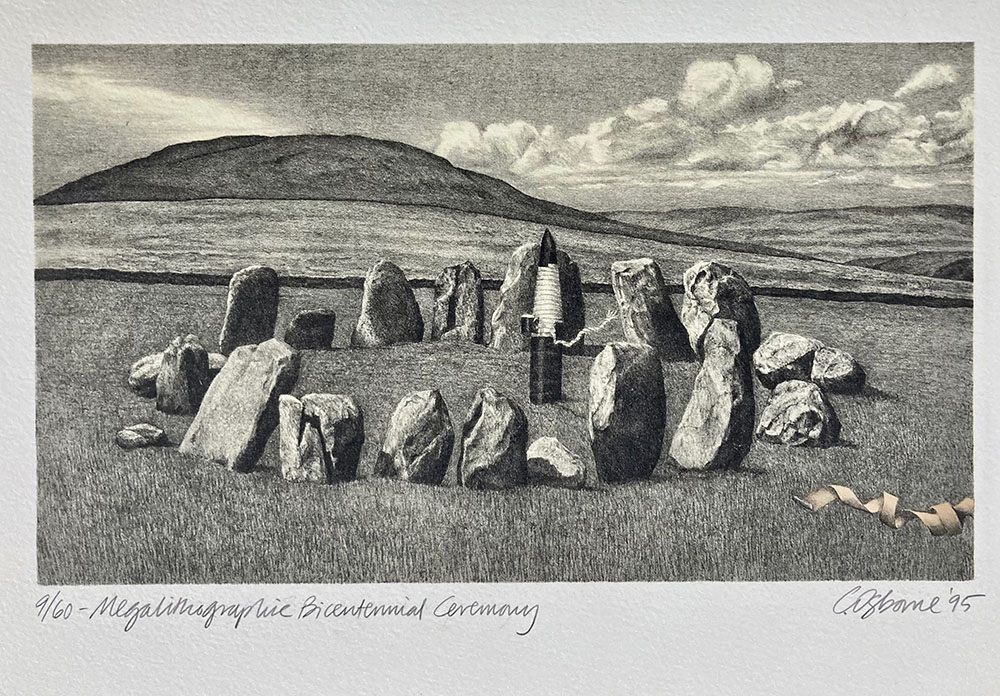
Megalithographic Bicenntennial Ceremony by Cynthia Osborne, lithograph, 6.25 x 11 inches. Photo: Roxanne Sexauer
The camera was Cynthia’s preferred sketchbook and she had something of a “perfect pitch” when it came to capturing the essence of a scene. Where others might take many photos of the same phenomena, Cynthia would usually take only one shot. She had the patience to wait, the intellect to see the potential for meaning in the situation, and perfect timing. These photos were often the basis for her drawings on stone.
There is a “truth” to Cynthia’s imagery as she absorbed what she saw. When you look at her work, you see what she saw. It makes perfect sense that stone became Cynthia’s drawing surface—a strong natural material that carried her beautiful marks and washes. But it was also her amazing drawing skills and technique that transformed what she saw into meaningful artworks. She observed both with her hand and her mind, they both moved at the same time, with no delay. I don’t think Cynthia owned an eraser.
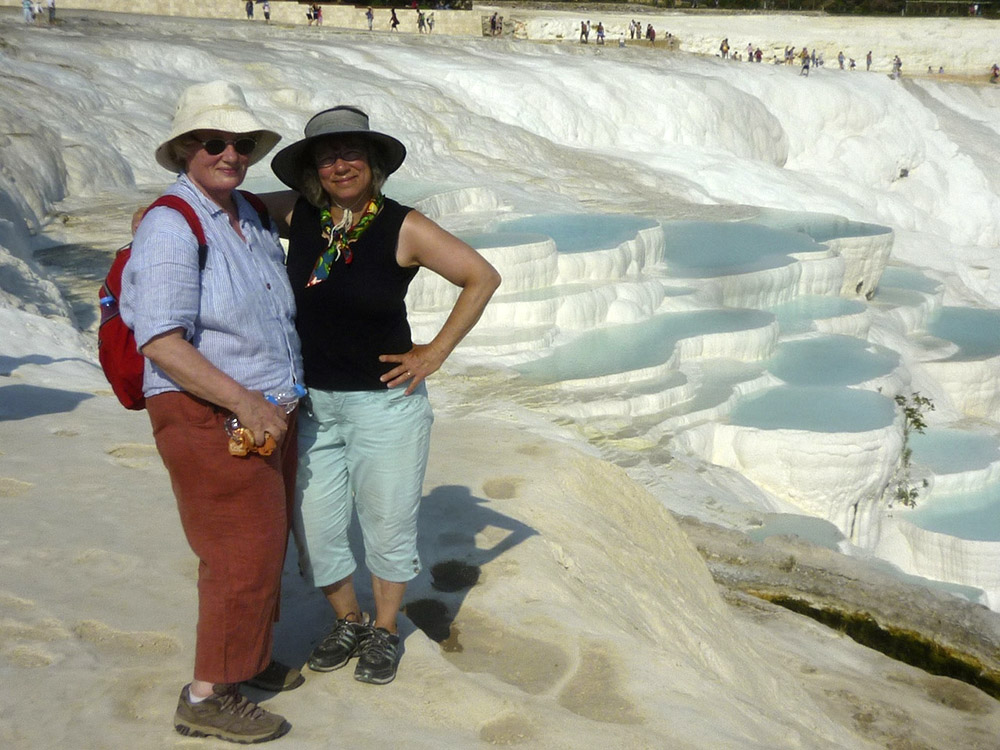
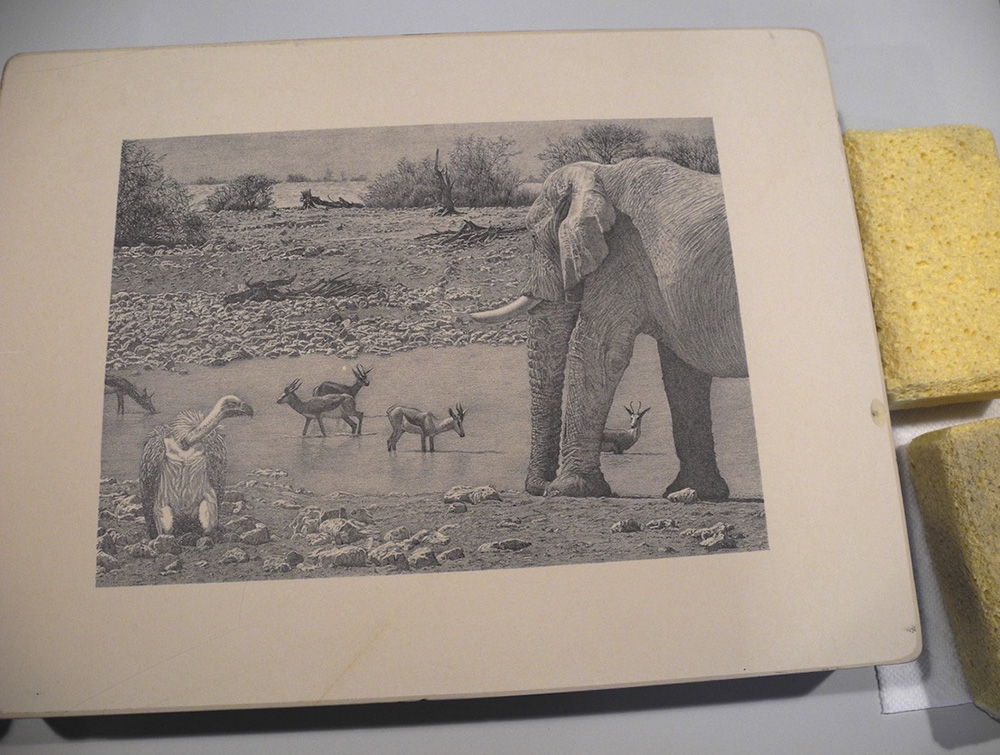
Cynthia Osborne and Katherine Bazak in Turkey, 2014. Litho stone with drawing by Cynthia Osborne.
We first met in grad school, but bonded when we both ended up teaching at San Diego State in 1974. She was my friend for 44 years. You had to be comfortable with silence if you wanted to spend time with Cynthia, as she was a quiet person by nature, not shy, just not a chatterer. I don’t think I ever saw her feign “peppiness.” She was fascinating and smart, a gentle curmudgeon with a wry wit and sly smile, who was annoyed by mediocrity. For many years during our teaching careers, we spent our Spring Breaks together in New York City. We traveled together internationally as well. Cynthia was an adventurous traveler, well versed in her destinations. She exposed me to places and experiences I would not have otherwise thought to venture.
She was a voracious and close reader with an incredible memory, and an even more impressive ability to retain information. She loved libraries, books, and newspapers. She was curious about everything, art related or not: foreign movies, scientific discoveries, best local restaurants, music, theater, opera, dance, museum exhibitions, galleries, television, politics, public personalities, celebrities—she knew about it. One was lucky if they were a recipient of Cynthia’s weekly letters, penned in her amazing handwriting and personally curated for each recipient. The letters, and later emails, contained her thoughts and recommendations regarding anything she thought the recipient would be interested in. She certainly kept me current.
I think of Cynthia not only as an artist but also as a naturalist, who keenly felt for the plight of animals and the environment at the hands of humankind. She read and admired environmental advocates like Rachel Carson, Douglas Adams and Diane Ackerman but she also had great regard for Beatrix Potter, whose magical drawings and stories were informed by rigorous scientific observation and exquisite technique, and were also commentaries on the realities of living both in the natural world and the societal one. I remember reading a description of Beatrix Potter as a woman who read quietly, watched quietly, thought deeply and learned as much as she could. I think that this is a perfect description of Cynthia Osborne.
